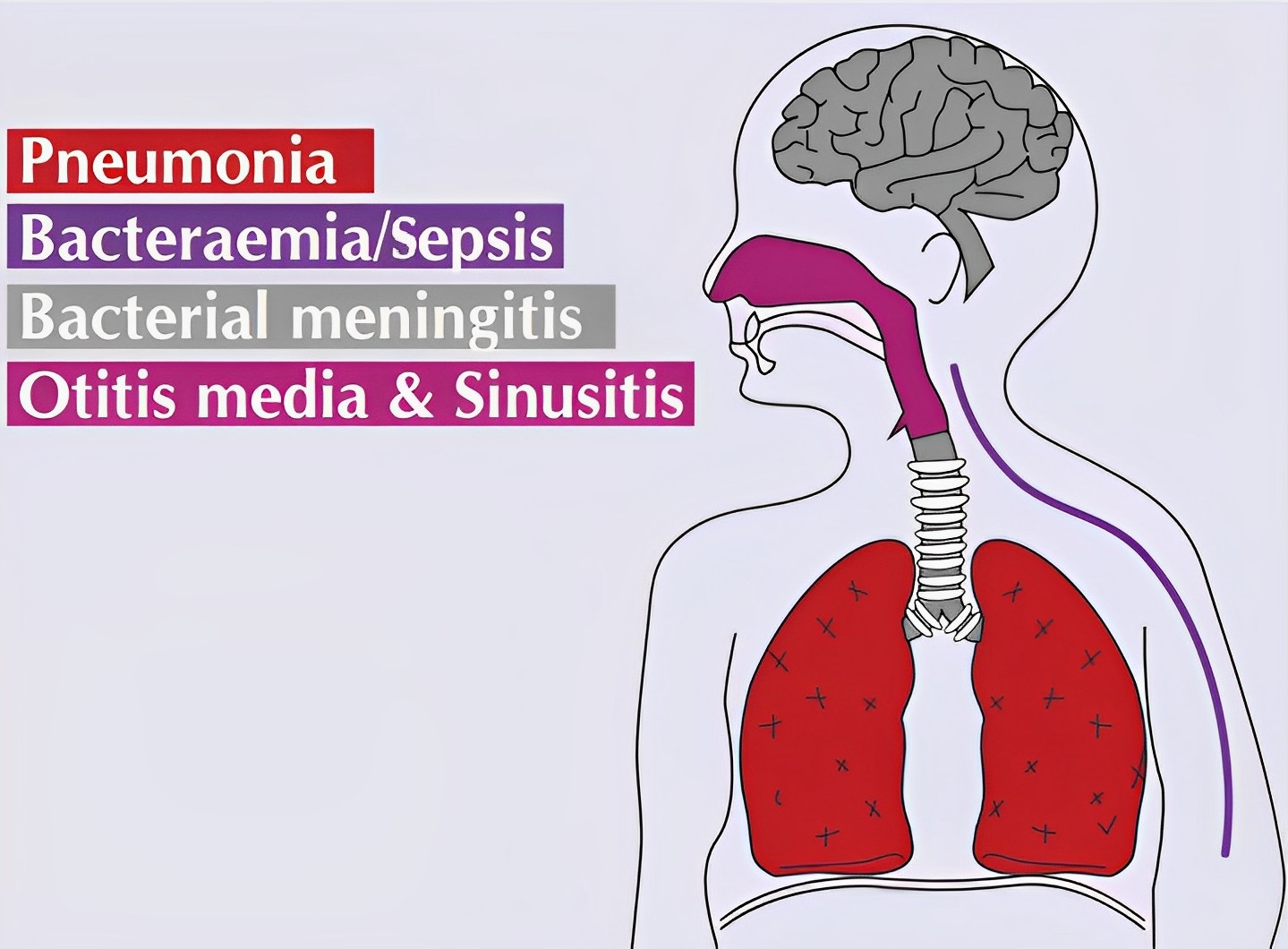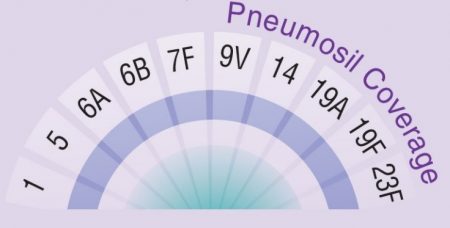Disease Overview
What is Streptococcus pneumonia?
Streptococcus pneumonia, also known as pneumococcus, is a gram-positive encapsulated bacterium that can cause a variety of diseases, particularly in children and the elderly.
What are Pneumococcal Disease?
Diseases that are often caused by pneumococcus include:
– Pneumonia: inflammation of the lungs
– Bacteremia: bacteria are present in the bloodstream
– Sepsis: Life-threatening condition caused by the body’s response to an infection
– Bacterial meningitis: infection of the membranes that cover and protect the spinal cord and brain
– Otitis media: Middle ear infection
– Sinusitis: inflammation of sinuses
– Bronchitis: inflammation of bronchial tubes
Why pneumococcal infections are important?
According to 2022 reports, 2.5 million deaths due to pneumonia each year worldwide which 670,000 of them are children.Globally, Pneumonia is the First Killer of children under age five and the pneumococcus is the most common cause of severe childhood pneumonia.Pneumonia is the Biggest Vaccine-Preventable cause of death in children under five, worldwide.
What is WHO prequalification of a vaccine?
If a vaccine has undergone thorough evaluation of relevant data, testing of samples and WHO inspection of relevant manufacturing sites -and the outcome is positive- it is included in the WHO List of Prequalified Vaccines.
This means that the product meets WHO standard for vaccine quality, safety and efficacy standards, as endorsed by the WHO Expert Committee on Biological Standardization (ECBS) and is suitable for the target population.

What is the recommended dosage and administration schedule for the Pneumosil vaccine?
Pneumosil is given as a three-dose series at 6, 10, and 14 weeks of age or 2, 3, and 4 months of age or 2, 4, and 6 months of age. Depending on the recommended dosing schedule.
A booster dose may be given at 9-10 or 12-15 months of age.
The minimum interval between doses is 4 weeks, and if a booster dose is given, it should be at least 6 months after the last primary dose. (For more information click here)
How is pneumosil vaccine typically given?
The dose is 0.5 ml given intramuscularly, with care to avoid Injection into or near nerves and blood vessels. The vaccine should be given by intramuscular injection.
The preferred sites are anterolateral aspect of the thigh in infants or the deltoid muscle of the upper arm in young children. The vaccine should not be injected in the gluteal area. Do not administer Pneumosil intravenously, intradermally, subcutaneously. Since the safety and immunogenicity of these routes have not been evaluated.
Can we use Pneumosil with other vaccines?
Clinical findings indicate that pneumosil can safely and effectively be administered concomitantly with diphtheria, tetanus, whole-cell pertussis, Haemophilus influenzae type b, inactivated or oral poliomyelitis, rotavirus, hepatitis B, measles and rubella and yellow fever vaccines. No explanation was given for the low responses of Rota virus vaccine in both group.
How to store Pneumosil vaccine?
Pneumosil vaccine should be kept between +2°C and +8° C.
Shake vigorously immediately prior to use (to obtain a homogenous, whitish turbid liquid in the vaccine container).
Discard if the vaccine has been frozen.
The vaccine is not to be mixed with other vaccines/products in the same syringe.
What is VVM (Vaccine Vial Monitor)?
VVMs are small indicators that adhere to vaccine vials and change color as the vaccine is exposed to cumulative heat, letting health workers know whether the vaccine has exceeded a pre-set limit beyond which the vaccine should not be used.
References:
1. Pneumosil Package Insert, Revision Date: 03/2023
3. Eur J Clin Microbiol Infect Dis. 2020; 39(12):2257-2267.
4. https://www.path.org/articles/vaccine-options-preventing-pneumonia-just-got-better-india/
5. https://extranet.who.int/pqweb/file/29663240/download



